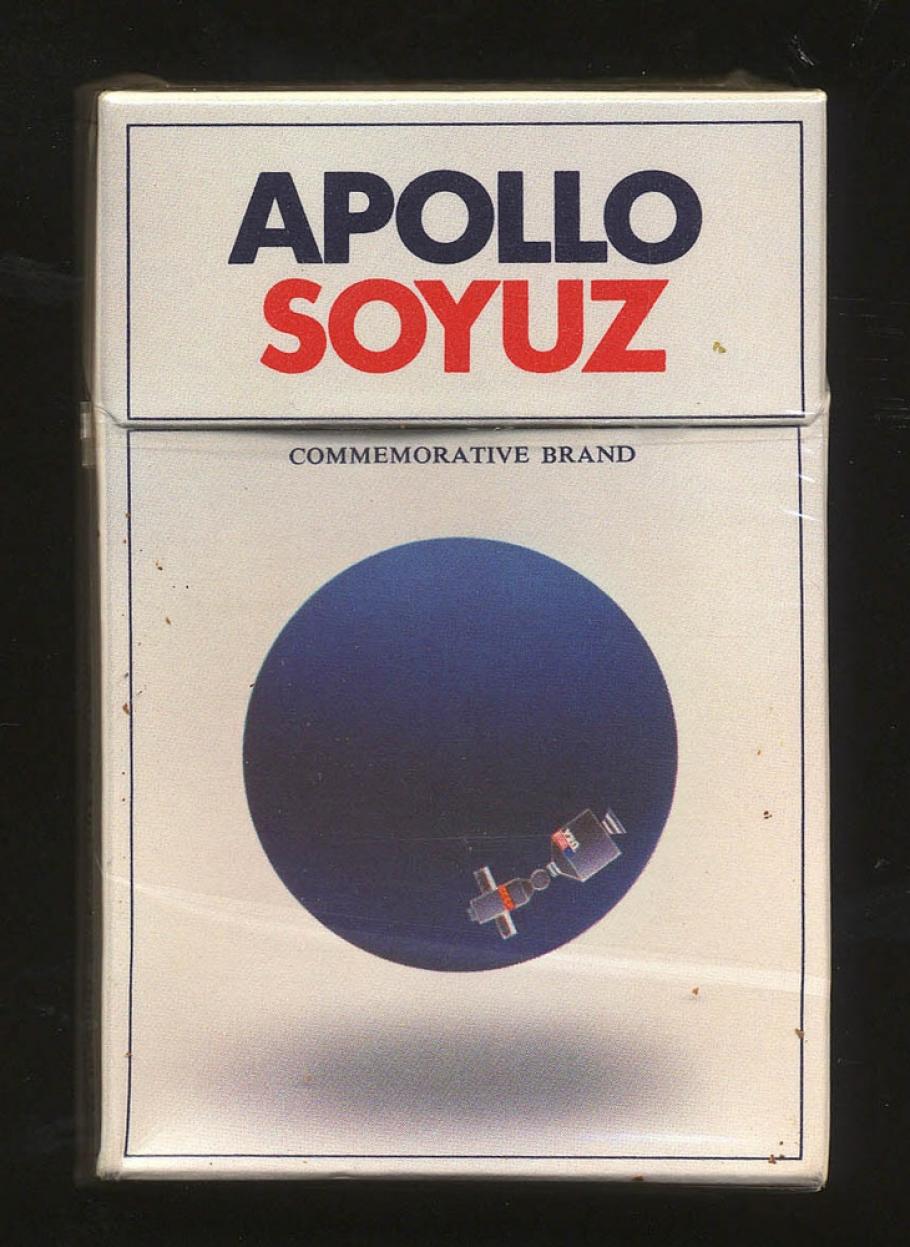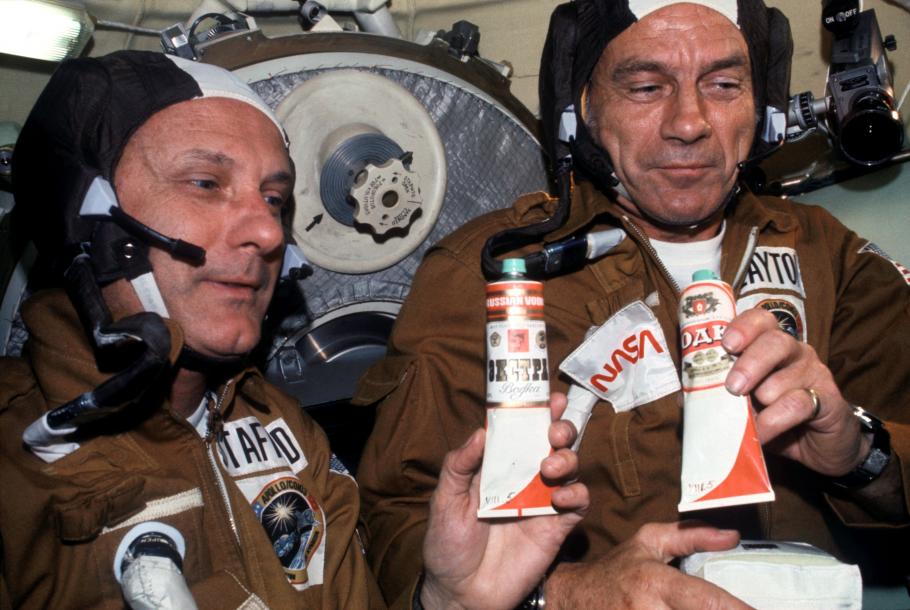Next week marks the 40th anniversary of an important moment in space history, when astronauts and cosmonauts greeted each other warmly in their docked Apollo and Soyuz spacecraft while orbiting above the Earth. It was the first joint space mission between the United States and Soviet Union. One friendly gesture left out of the encounter, quite common at the time, was having a cigarette together, since smoking tobacco in a spacecraft is too dangerous. But among the commemorative items created in the aftermath of the project, preposterous to us in the twenty-first century, was a pack of Apollo Soyuz cigarettes, a symbol of the hospitality shared in space by two former enemies.
The Apollo Soyuz Test Project was the result of the new era of détente that had emerged from talks between American President Richard Nixon and Soviet Premiere Leonid Brezhnev between 1972 and 1974. One of the first areas of cooperation they considered was space exploration, and in 1972 the two countries agreed to a joint space venture. This would involve a rendezvous and docking together of an American Apollo spacecraft and a Soviet Soyuz spacecraft. The Americans chose astronauts Thomas Stafford, Vance Brand, and Donald "Deke" Slayton as its crew. The Russians selected Aleksei Leonov, who was the first human to walk in space, and Valeri Kubasov. On July 15, 1975 the Soyuz launched from Kazakhstan, and eight hours later the Apollo spacecraft launched from Florida. Two days later, Stafford and Leonov were seen shaking hands in space on TV screens across the world. "Glad to see you," Stafford told Leonov in Russian. "Glad to see you. Very, very happy to see you," Leonov responded in English. For the next several days, the astronauts and cosmonauts paid visits to each other’s’ spacecraft, ate not-so-delectable space food in tubes, exchanged commemorative items, and performed assigned tasks.
This new-found attitude of cooperation extended to Earth-based projects as well. Among these was a joint venture between the American cigarette manufacturer Philip Morris and the Soviet Yava cigarette factory, which produced the Apollo-Soyuz commemorative cigarettes. Officials on both sides hoped that this and other joint manufacturing endeavors would contribute to détente beyond the Apollo-Soyuz spaceflight. The cigarette pack features a blue circle with a rendering of the docked Apollo-Soyuz spacecraft inside it, and bears English writing in blue and Russian in red. On one side it says, “Apollo Soyuz commemorative brand,” and on the other “Soyuz Apollo.” On one edge of the pack are the words, “Developed by Philip Morris Inc. U.S.A. and Glavtabak, U.S.S.R. in commemoration of U.S./Soviet space cooperation” in English and Russian, along with the English words, “Made in U.S.S.R., Tava Factory, Moscow.” Glavtabak was the Soviet State Tobacco Agency. The other edge displays the U.S. Surgeon General’s warning that cigarettes are dangerous to your health. A memorandum from The American Tobacco Company dated September 19, 1975 and obtained from the Legacy Tobacco Documents Library at the University of California San Francisco states, “Our Laboratory smoke panel judged the smoke taste to be of medium impact and slightly sweet with spicy notes. In general, the panel liked the taste of the product.” The cigarettes were sold in the United States and the USSR. They remained popular in the former Soviet Union after the collapse of the communist government as a symbol of luxury and because they tasted less harsh than traditional Soviet-grade tobacco products. As more Western tobacco brands became available in the former Soviet Union, the Apollo-Soyuz commemorative brand became less popular, but a factory in Kazakhstan still makes these cigarettes under license with Philip Morris. The pack in the Museum’s collection was donated by a NASA employee who bought them while visiting the USSR. It is not on display.

